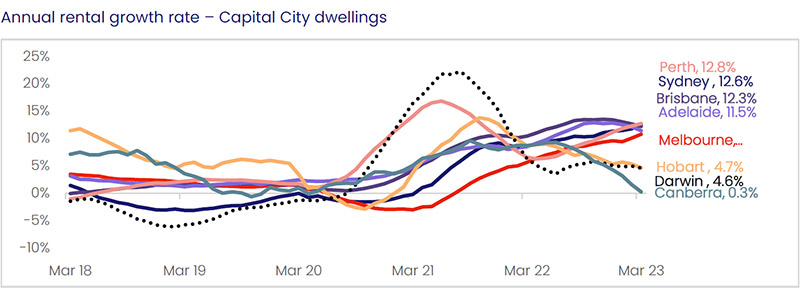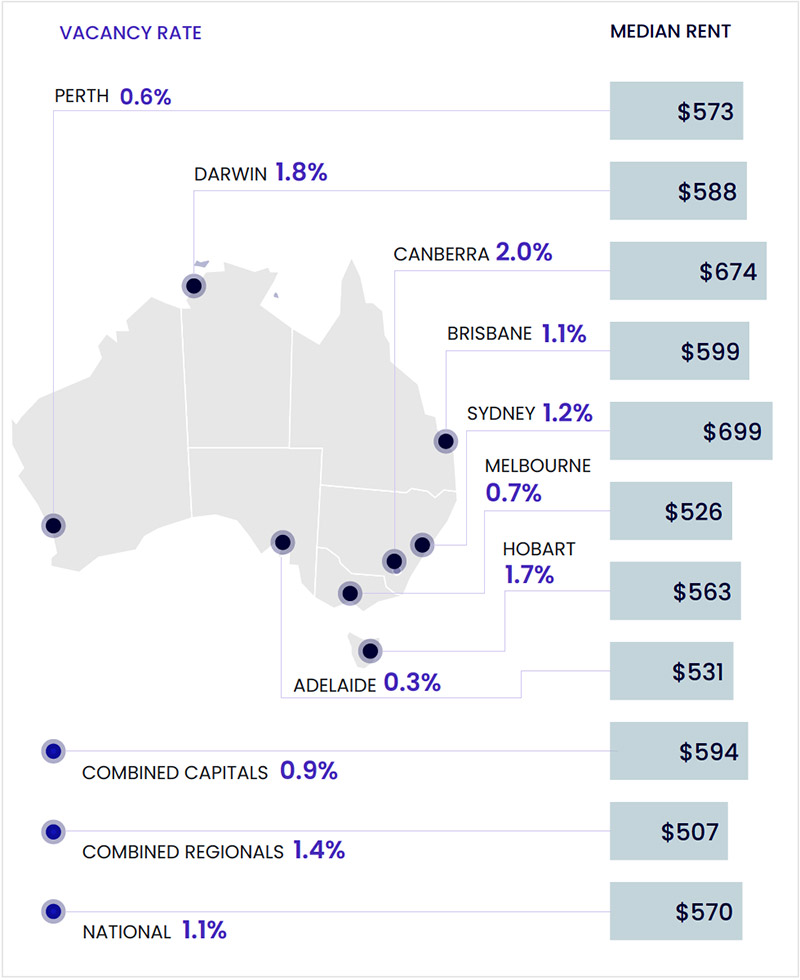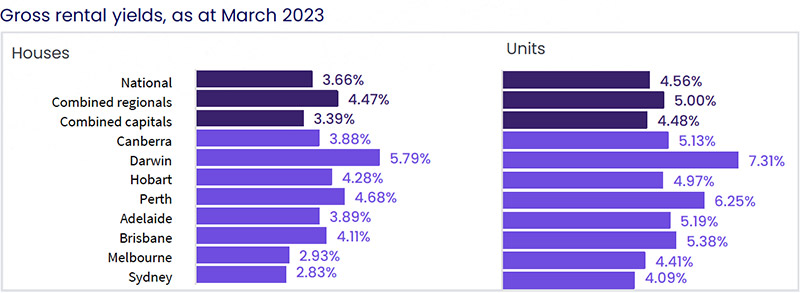No end to rental crisis as costs continue to soar
The rental crisis shows no signs of abating, with national unit rents increasing 3.9 per cent over the quarter, while house rents recorded a 2.0 per cent rise.
The rental crisis continues to unfold across the country, with millions of households confronting even higher accommodation costs.
The pace of growth across Australia’s rental market reaccelerated over the March quarter, with rents up 2.5 per cent, compared to a 2.0 per cent lift over the three months to December.
Sydney is the most expensive capital city rental market across both property types for the second quarter in a row, with the typical rental house costing $747 per week, and a typical unit renting for $648 per week.
Despite recording the largest quarterly rental increase, Melbourne remained the country's most affordable capital, with a median rental value of $526 per week.
The uptick in the quarterly rental trend was driven by a surge in unit rents across the largest capitals, with unit rental values across Sydney and Melbourne rising 5.3 per cent and 4.3 per cent, respectively. National unit rents increased 3.9 per cent over the quarter, while house rents recorded a milder 2.0 per cent rise, according to CoreLogic’s Quarterly Rental Review.
Adelaide remained the most affordable capital to rent a unit in ($443 p/w) and is now the only capital with a median weekly unit rental value under $500 per week.

Source: CoreLogic
In the face of a major housing crisis, rents are rising due to a perfect storm of rising interest rates, record-low vacancies, and a critical lack of affordable and public housing.
Advertised rental prices continue to grow rapidly across the country. According to PropTrack, rents nationally are up 11 per cent over the past year in response to ongoing strong rental demand and very low vacancy rates.
PropTrack data indicated Perth recorded the largest rent increase in the quarter (8.7 per cent). Sydney (11.3 per cent), Brisbane (15.6 per cent), Adelaide (13.3 per cent) and Perth (11.1 per cent) all experienced increases of more than 10 per cent annually.
PropTrack Senior Economist Paul Ryan said that with rental market conditions extremely tight, rental prices would continue to climb.
“This is particularly the case in capital cities, where rent increases have not yet eased since accelerating in early 2022, whereas in the regions, rent growth has slowed after significant rent increases throughout the pandemic.”
Two thirds of Australian households own their own home with or without a mortgage, while almost a third (31 per cent) of households rented their home.
Key rental and yield statistics

Source: CoreLogic
The CoreLogic report reached a similar conclusion, stating that given the imbalance between supply and demand, it’s unlikely there will be much in the way of relief for renters over the short to medium term.
“Despite recording the strongest annual rental appreciation CoreLogic has on record over the year to December (10.2 per cent), the recent increase in rental income has failed to keep pace with increases in investor mortgage repayments, leaving many investors with negative cash flow,” the report noted.
“Additionally, net migration is likely to remain strong for some time yet, adding to rental demand and placing additional upwards pressure on rental values.”
For those looking for a rental, they need to act quick when a property is listed.
Rent.com.au found that in March, apartments in Sydney, Melbourne, Brisbane and Perth were leased on average within 12 to 14 days. Renters had a little more time in Darwin and Canberra, with an average of 25 days on the market before being leased.
Many tenants are responding by choosing to stay put, extending their current lease, rather than hunt for a new rental. This can be seen with CoreLogic’s 12-month rental hold period increasing from 1.57 years at the onset of Covid to 1.88 years in March.
Rental yields recovering
With national dwelling values inching up 0.6 per cent and national rents rising 2.5 per cent over the three months to March, gross rental yields continued to recover throughout the quarter to 3.88 per cent, according to CoreLogic.
While still rising, the pace of yield recovery has slowed, from a 24-basis point increase over the September quarter to a 10-basis point lift in the March quarter.

Source: CoreLogic
National gross rental yields are now 65 basis points higher than they were this time last year (3.23 per cent) and just 36 basis points below the pre-Covid decade average (4.24 per cent).
After reaching record lows in February 2022 (3.21 per cent), the yield recovery period to date has been fuelled by falling values and rising rents. However, with the CoreLogic national Home Value Index recording a rise in dwelling values over March (0.6 per cent), the upwards trend in yields will likely continue to ease.
Following the trend in rental values, national unit yields (4.56 per cent gross) rose at twice the pace of national house yields (3.66 per cent gross), up 17 and eight basis points, respectively, over the quarter.
Thanks to the strong yield recovery seen across both property types, houses are now recording their strongest gross yields since September 2020 (3.67 per cent), while unit yields are at their highest level since May 2019 (4.58 per cent).
Dwelling yields across the combined capitals (3.68 per cent) also rose at twice the pace of the combined regionals (4.56 per cent), up 12 and six basis points, respectively, over the three months to March.
Each capital and rest of state region saw gross rental yields rise over both the quarter and year.




















